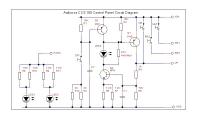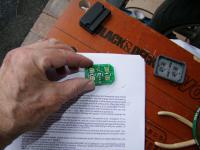dcarver
Well-known member
Works great when cold-ish, won't set when hot out..
Coldish equals ambient less than 78 F
When working, works great - sets quick, holds speed, no surging.
When not working, well, <_< ....
Voltlages look good at Control Switch, and all connectors have been cleaned and lubed.

Now that I've done some fjrforum research, next steps are:
Any other ideas to troubleshoot?
I don't think it's going to be any of the above. My hunch is the servo or circuit board is failing due to heat stress. This is a Smitty install with the servo under the tank on top of valve cover.
One last question - does anyone know where Smitty typically tapped into the brake circuit?
I've started to compile all the good info from various AudioVox threads on the fjrforum here.
When complete will xnfr the info back to here, the forum source for all things fjr!
Coldish equals ambient less than 78 F
When working, works great - sets quick, holds speed, no surging.
When not working, well, <_< ....
Voltlages look good at Control Switch, and all connectors have been cleaned and lubed.

Now that I've done some fjrforum research, next steps are:
- Measure Blue for ACV at 10 pin (where exactly is this LED that's supposed to flash with rpm increase?)
- Measure Purple at 10 pin for 0 vdc and 12 vdc with brake on (IIRC, I measured about 200 mvdc, brake lights off, and some are installing a relay to ensure 0 vdc)
- Measure vacuum to ensure I don't have a vacuum line closing down, pinching down with heat..
- Make sure 10k dropping resistor is OK on Blue line (suppressing resistor)
Any other ideas to troubleshoot?
I don't think it's going to be any of the above. My hunch is the servo or circuit board is failing due to heat stress. This is a Smitty install with the servo under the tank on top of valve cover.
One last question - does anyone know where Smitty typically tapped into the brake circuit?
I've started to compile all the good info from various AudioVox threads on the fjrforum here.
When complete will xnfr the info back to here, the forum source for all things fjr!































































